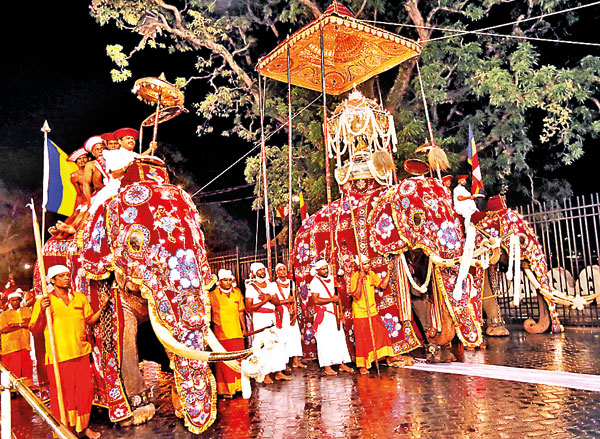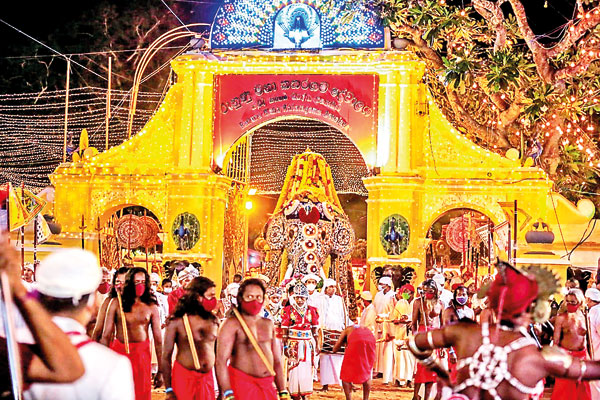Festival season
This is the festival season. Unfortunately due to the present conditions, this year’s festivals have taken a very low key. The biggest festival is the Kandy Esala Perahera held annually during this period.
Then comes the Kataragama festival. Large crowds gather at these festivals.

Kandy Esala Perahera
The Kandy festival dates back to the 4th century and is connected with Lord Buddha’s Tooth Relic being paraded around the city of Anuradhapura from where
King Sirimeghawanna (Kith Sirimevan)
301 – 28 AD ruled. The later rulers followed the tradition. Old records indicate that the procession had to be stopped due to local wars.
Known as the ‘Festival of the Tooth’ throughout the world, large crowds from different parts of the world, gather in Kandy to see the festival.
It is much more than a mere procession but includes the display of traditional customs. Although the majority of people who gather to witness the pageant is from the Buddhist and Hindu religious communities, the festival provides an opportunity for the others to witness much more than a mere procession. That is why it is referred to as ‘the pageant’.
The festival lights up the Kandy town for ten days.
The pageant begins with the
‘Kap Situveema’ when a blessed young jackfruit tree is rooted and re-planted in the vicinity of each of the four Devales dedicated to
the four guardian gods – Natha, Vishnu, Kataragama and the goddess Pattini. In the olden days, it was meant to shower blessings on the King and the people of Sri Lanka.
The first procession of the Sacred Tooth Relic begins with the ‘Kumbal Perahera’, believed to drive away evil spells and ill thoughts. The procession parades the streets for five days.
It is, in a way, a semi procession, and the ‘nilames’ do not take part. The drummers and tuskers take part without any ceremonial costumes. The march is repeated for five days in several streets in the Kandy city.
The procession in the next five days is known as the ‘Randoli Perahera’ when the Sacred Tooth Relic is also paraded.
In the olden days of the Kandyan Kingdom, the chief queen of the king had taken part in the procession.
The queens of the kingdoms were not permitted to have any role in the procession of the Sacred Tooth Relic. However, as a sign of honour and respect to the queens, a palanquin is paraded. It is usually the last item of the procession.
After five more nights of the Randoli Perahera, the parade ends with ‘Diya Kepeema’. It is a water cutting ceremony at the Mahaweli River at Getambe a few miles from Kandy. A day perahera is held across the city to mark the celebration.

Kataragama Esala Perahera
The Perahera held now, dates back to the reign of King Kirti Sri Rajasinghe (1747 – 82 AD). However, at the time, the Tooth Relic was considered to be privately owned by the King. Although the public had not been allowed to worship the Relic,
King Rajasinghe had wanted the relic to be taken in procession for the people to see and revere.
After the colonial British Empire defeated the Kandyan Kingdom in 1815, the custody of the relic was given over to the Buddhist clergy. The clergy had appointed a layman and called him the ‘Diyawadana Nilame’ to safe keep and handle routine administrative matters of the Tooth Relic.


